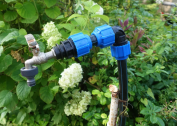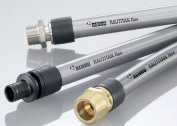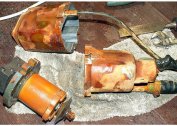Providing continuous water supply is carried out thanks to a number of structures and mechanisms, for example, water inlets, pumping stations and filtration, pipelines, etc. Automation of water supply and sanitation allows you to coordinate the work of individual mechanisms and structures.
Requirements for automatic water installations
Process automation is applicable to the following water supply systems:
- treatment facilities;
- artesian wells;
- booster stations;
- filter stations;
- first and second level lift stations.
It should be borne in mind that the process of extraction, filtration and transportation of water is associated with various chemical, biological and physical reactions.
Water supply automation is carried out taking into account the following requirements:
- The intensity of the work units must constantly change taking into account the needs of the system.
- In the event of the failure of one equipment, all other sections should work as usual.
- Primary water characteristics are unstable.
- Work takes place continuously and in an economical mode.
- Work units are installed at remote points, and they are controlled remotely from a work center.
- Strict requirements for the quality of water that is supplied to the consumer.
For the smooth operation of the entire system and each working node, you need to properly draw up a project and staff all the components.
Automation system device
 To automate the water supply process, the following equipment is required:
To automate the water supply process, the following equipment is required:
- controller;
- measuring transducers;
- actuators;
- sensors for measuring fluid flow;
- blocks of data input and output.
Sensors are needed to regulate automatic processes and transmit information to the work node in case of malfunctions.
Blocks, they are also modules of output and input, convert and transmit information received from sensors to controllers.
To transfer information from the periphery to the control center is used:
- satellite connection;
- radio channels;
- wireless Internet;
- switch;
- mobile connection.
Also an integral component of the device is the actuator. It is needed to receive a signal from the controller and convert it into action. The scheme of the executive mechanism of automated water supply includes an engine, relay, pneumatic and hydraulic drive.
Design of automation systems
 For example, we can consider a scheme for automating the process of water intake and water supply from wells. Design must meet the following conditions:
For example, we can consider a scheme for automating the process of water intake and water supply from wells. Design must meet the following conditions:
- The entire water supply process from receipt to delivery is automated.
- From the control room, operators should be able to remotely change the parameters of the pumps.
- Continuous monitoring of the quantity and quality of the extracted resource, the status of equipment is displayed on the dials.
- All information is archived in the controller databases.
Water supply automation should provide a continuous and uninterrupted supply of water to all consumers, despite the seasons, weather conditions, etc.
Installation Steps
Often in rural areas at the stage of project creation there is no central water supply. Or there is a common pipeline, the pressure is weak, consumers often suffer from a power outage or its quality does not meet sanitary standards.As a rule, there is only one solution to the problem - search and well drilling, which will provide guests with the necessary volume of drinking water. This process is laborious and financially expensive. The installation steps are as follows:
- Drilling and arrangement of wells.
- Acquisition of correctly selected pumping equipment (pump station or pump).
- Installation of equipment.
- Installation and arrangement of the pipeline.
- Installation of the accumulator.
- Installation of controllers.
- Connection to electricity.
The well needs to be equipped with a caisson. This is a recess in the soil in the shape of a rectangle or cylinder. As a rule, the depth of the pit is 2 meters; its walls are covered with reinforced concrete slabs that are in close contact with each other. The caisson should rise no more than 200 mm above the surface of the earth. It is also equipped with good waterproofing.
Coordinated and proper functioning of all components increases the reliability and efficiency of the automated water supply system, reduces costs and leaves the final indicators of tap water normal.



